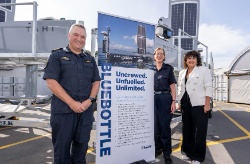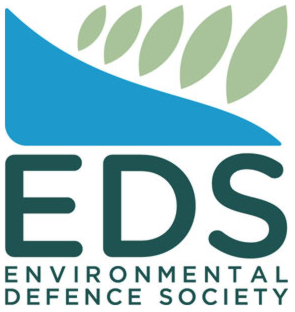Phil Pennington, Reporter
New Zealand is becoming increasingly involved in operations designed to benefit the US Navy in its space race against China, even as the defence force denies its tentative steps into space have anything to do with military operations.
The New Zealand Defence Force says the only two launches into space it has been involved with have nothing to do with military operations.
But official reports in the US call that into question, with NZ joining Project Overmatch - the US Navy's highest priority project to boost cutting edge communications - a few weeks ago.
The NZ government's new defence capability plan says up to $600m could be spent by 2029 on space systems, mostly to "plug into partner networks".
The NZDF already has two "plug-in" space experiments running with the US. It has also integrated a radar station near Auckland into a new "federated" Five Eyes space system, and joined Project Overmatch six weeks ago.
Project Overmatch has already upgraded at least three aircraft carrier strike groups in the Pacific "to enhance fleet warfighting capabilities".
The New Zealand space experiments - dubbed Tui and Korimako - were the primary payloads on satellites launched by the US's spy satellite agency, the National Reconnaissance Office (NRO) in 2024 and 2025.
The NZDF has denied the payloads could be used in any way to support military operations, and downplayed any national security use.
However, scientists in the NZDF generated 2850 files working on the payloads, documents obtained under the Official Information Act showed.
The US Navy said the overall project that included Tui and Korimako was to improve maritime communications to advance "the warfighting advantage of the naval service".
The second experiment was launched in January.
New Zealand and the other Five Eyes partners joined the largely secretive Project Overmatch a month later, official US reports said.
The Pentagon called this a "historic milestone", but the NZDF and government did not announce it.
Project Overmatch is rolling out space-enabled communications systems as the Navy's contribution to the Pentagon's top priority - 'CJADC2', or Combined Joint All-Domain Command and Control.
Its mission was to "revolutionise naval warfare through advanced digital technology and allied cooperation", the navy said.
"Overmatch has really focused much more directly on the near-term operational problems faced by commanders dealing with China," one commander said.
US Defence Secretary Pete Hegseth has been outspoken on the threat of China in the Indo-Pacific since he took the job this year.
Foreign Minister Winston Peters recently just met with the Commander of US Indo-Pacific Command (INDOPACOM) in Hawaii, as part of a crossparty delegation tour of the Pacific.
'Critical capabilities for the next war'
The big picture involves the US Navy, Air Force, Space Force, Missile Defense Agency and NRO spy satellite agency - along with allies -integrating command and control, while "increasing kill chain speed and lethality by 2027", a leading general told a space symposium last week.
Defence and Space Minister Judith Collins also spoke at that event.
The integration is the Pentagon's number one priority, and the $1.2 billion Project Overmatch is the US Navy's main contribution to it.
Overmatch carries the slogan and badge: "Decide first, win."
"Simply put, Project Overmatch will provide us a decision advantage over our adversaries and help us deliver a more lethal and better-connected fleet far into the future," said a commander when it first came to light in 2021.
Official US reports have linked the New Zealand satellite experiments with cutting-edge research on naval communications, but the NZDF has denied this.
The project was outlined in a short US naval publication last year headlined: "Critical capabilities for the next war".
The tech "adds sensors in the space layer to be able to see what's going on in the water", said California's Naval Postgraduate School (NPS), that is running the two-year project.
The technology was vital for command, control, reconnaissance and targeting long-range missile firing.
But in a short statement to RNZ last week, the Defence Force repeatedly distanced the launched from military operations.
"The payloads cannot be used for military operations," it said last week.
"The Tui and Korimako payloads cannot be used to support military operations and have no national security aspects that would require the involvement of the GCSB or the NZSIS.
"The goal of this research, distinct from military operations, is to help evaluate benefits, weaknesses, opportunities and risks," said the NZDF.
It tested Five Eyes interoperability "using practical systems that are separated from military operations", it added.
But in February, in response to an OIA not lodged by RNZ, the NZDF said: "These experiments will generate NZDF knowledge to drive future military space operations."
Tui and Korimako are the primary payloads on NRO satellites - the NRO operates hundreds of spy satellites - in a project run by the NPS. Both satellites were launched by Rocket Lab, one from Mahia Peninsula in March 2024, one from Virginia in January.
While the NZDF said Tui and Korimako did not include free-space optical communication components, the NPS said: "The long-term effort seeks to advance... research into free-space optical communications for CubeSats and small satellites."
The world's rival navies are in a race to develop free-space optics (FSO), very fast laser communications that are hard to intercept, in place of current slow radio frequencies - "fighting at the speed of light".
Federated Five Eyes in space
Tui and Korimako are part of a move to set up a "federated" space system by 2025.
Under it, the Five Eyes intelligence group - the US, Canada, UK, Australia and New Zealand - will pool resources and cut costs.
The aim is to enhance "coalition advantages in an increasingly contested space environment".
The federated system already includes some small satellites, and 13 ground stations worldwide - 10 in the US and one at Whangaparāoa, in the international smallsat command control network (ISC2N). This network taps into the Pentagon's own MC3 - Mobile CubeSat Command and Control - ground station network.
The Five Eyes nations have done joint space research for more than a decade, and in 2018 each nation defined a priority research area.
Some are military and some are civilian. Others are both - dual-use - such as 'Phantom Echoes' in 2019-21, that worked to improve sensors to help keep coalition satellites out of trouble.
The collaboration has received a new boost from them all signing up to Project Overmatch.
"Together, we are working to deliver resilient communication tools and decision-making advantages to the hybrid fleet and warfare commanders," said a rear admiral who is the director of Overmatch and also commander of NAVWAR.
NAVWAR (navigation warfare) and 'Square Dance' are arrangements that hold bimonthly meetings that NZDF is part of, an OIA showed.
A Pentagon chief information officer said about Overmatch: "Any data, anywhere, any time that is needed. And the vision, when I start to spin this out, is coalition warfare.
"You have a US Marine Corps [High Mobility Artillery Rocket System] getting a firing solution from an Australian [intelligence, surveillance and reconnaissance] capability; maybe you have a Japanese frigate that's also going to hit the same target there; you've got multinational F-35s coming on station to provide combat air-support capability. All of this is going to have to happen quickly."'
Defence and space meetings
In speech notes for the world's biggest space symposium last week in Colorado, Defence and Space Minister Judith Collins did not mention military projects.
She instead stressed science projects with NASA and others, and business opportunities in the world's third busiest country for rocket launches.
"I look forward to seeing the progression of existing relationships and the development of new relationships between New Zealand and US organisations and businesses," she said in the notes.
"I see our relationship with the US as a key driver in developing New Zealand's space sector."



 Gordon Campbell: On Why The US Stands To Lose The Tariff Wars
Gordon Campbell: On Why The US Stands To Lose The Tariff Wars Te Pāti Māori: Ngarewa-Packer - Fast-Tracking Seabed Mining Ignores Māori Opposition And Environmental Precedent
Te Pāti Māori: Ngarewa-Packer - Fast-Tracking Seabed Mining Ignores Māori Opposition And Environmental Precedent New Zealand Defence Force: Defence And Customs Strengthen Maritime Security With Uncrewed Surface Vessels
New Zealand Defence Force: Defence And Customs Strengthen Maritime Security With Uncrewed Surface Vessels SPCA: Huge Win With New Dog Tethering Regulations
SPCA: Huge Win With New Dog Tethering Regulations Community Housing Aotearoa: Ngā Wharerau o Aotearoa Says New Partnership Model Helping Ensure Right To A Decent Home Is Realised
Community Housing Aotearoa: Ngā Wharerau o Aotearoa Says New Partnership Model Helping Ensure Right To A Decent Home Is Realised Greenpeace Aotearoa: Babies At Risk Due To Nitrate-Contaminated Drinking Water In Ashburton District
Greenpeace Aotearoa: Babies At Risk Due To Nitrate-Contaminated Drinking Water In Ashburton District Driving Change Network: Response To Government’s Proposed Driver Licensing Changes
Driving Change Network: Response To Government’s Proposed Driver Licensing Changes

